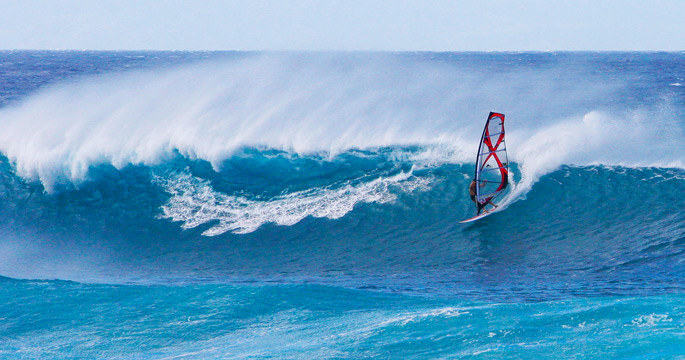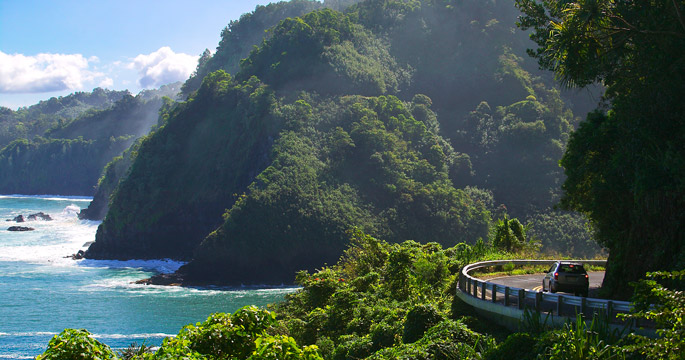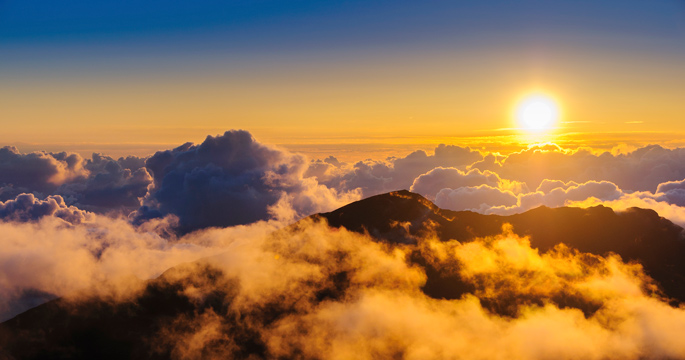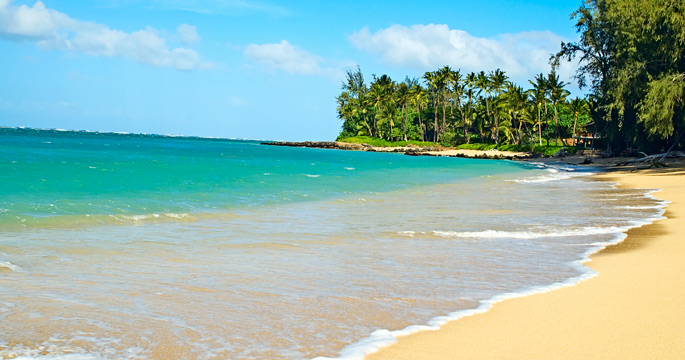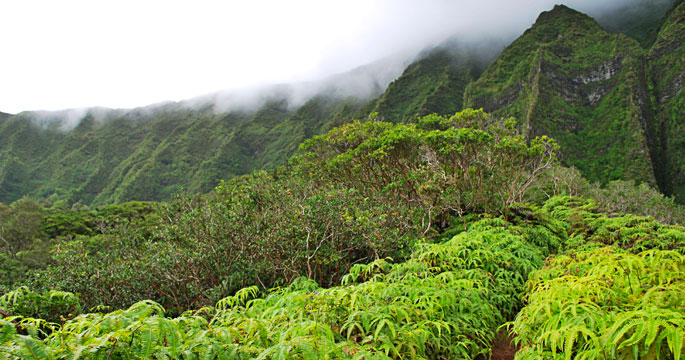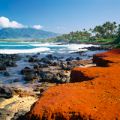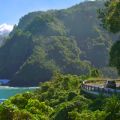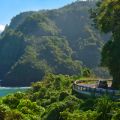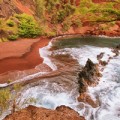This is where land and sea come together to create a tropical playground with something for everyone. Whether it’s kayaking calm coves, exploring coral reefs or riding wind and surf, Maui is ground zero for active water sports. For the more relaxed, there are breaching whales to watch, miles of scenic beaches and seaside resorts ready to wine, dine and pamper. Golf courses sit beneath volcanic highlands that play host to a wide range of adventure sports and provide scenic drives for the more sedate.
1 A Little Bit Country
Maui blends world-class resort amenities with open spaces. It’s larger than Oahu, but has one-eighth as many people. Save for the towns of Kahului and Lahaina, and the resort areas along the western shores, it is an island of pasture, farmlands and wild spaces. Haleakala National Park alone encompasses nearly 8 percent of the entire island.
2 Altitude Adjustment
Maui’s towering Haleakala volcano not only creates sunny rain shadows for the resorts and beaches on the island’s west coast, it also provides an elevated playground where you can hang glide, horseback ride, coast down a volcano on a bicycle or hike to lava caves, rainforests and waterfalls. Greeting the sunrise from atop the crater summit is a popular ritual, but one that will have you getting out of bed before four o’clock to make the drive, and bundling up against 40-degree temperatures up top.
3 30 Miles of Beaches
Ranging from wild and sporting to serene and scenic, Maui has a beach for everyone. The island has more than 30 miles of sandy strands, ranging from expansive crescents to small swaths tucked into protective coves. Sands come in colors from black to gold to white and even red. Tiny Paako Beach, aka Secret Cove, is a favorite site for oceanfront weddings.
4 Easy Arrivals
Maui’s Kahului Airport provides non-stop flights to nine U.S. gateways, so there’s no time lost transferring through Oahu. If island hopping is part of the vacation plan, there are daily flights to Oahu, Kauai and the island of Hawaii, as well as ferry service to the islands of Lanai and Molokai.
5 Whales
The world’s largest mammals come from all parts of the Pacific Ocean to breed in the waters of the Hawaiian Islands, and one of the best places to see breaching humpbacks is in the Auau Channel, near Maui’s northwest corner. Whale-watching season runs from early January through the end of March, with tour boats leaving Lahaina’s harbor daily for a 15-minute cruise to the prime observation areas.
6 620 curves, 59 bridges
The highway to Hana winds along Maui’s verdant eastern shore, with ocean views, waterfalls and enough photo ops to overload your camera’s memory card. Though the map shows a one-way drive of just 45 miles from Paia to Hana, plan on spending a full day for a there-and-back excursion. You’ll need the extra time for numerous scenic stops and to ease passengers through the hairpin turns in comfort.
7 Homegrown
Maui’s sun-washed western slopes are fertile territory for organic farming, and the island’s bounty doesn’t escape the notice of local chefs. The farm-to-table food movement is growing—literally—and fresh-sourced ingredients are finding their way into kitchens across the island. Several farmers offer tours and workshops, and some even provide on-property accommodations for those seeking to indulge their green thumbs.
8 Wind Riders
Sites like Hookipa Beach draw the world’s best windsurfers and kiteboarders to play in the surf and steady trade winds. The Aloha Classic is one of the largest annual windsurfing events, running for two weeks in late October to early November, but competitions continue on throughout the winter season. For top-level kiteboarding action, catch the KSP World Championships in late November.
9 Made in the Shade
Shading an area the size of a city block, Lahaina’s courthouse banyan tree provides a shaded venue for local events that include art festivals and craft bazaars. Lahaina itself is worth a day of exploration. The first capital of the Kingdom of Hawaii, this port of call has seen Polynesian warriors, whalers and missionaries come and go. To get the full story, take a walk on the Lahaina Historic Trail, which runs through the town’s two historic districts near Front Street.
10 Sweet Stuff
Maui is the only Hawaiian island that is still a significant producer of sugar, and cane fields cover some 37,000 acres of the ‘central valley. As part of the harvest process, these fields are burned before the cane is cut, creating dramatic plumes of smoke that can be seen from the coast. Though not a must-see, the Alexander & Baldwin Sugar Museum will certainly interest history buffs, while the youngsters may clamor for a ride on the Sugar Cane Train that chugs along the coast from Lahaina to Puukolii.

